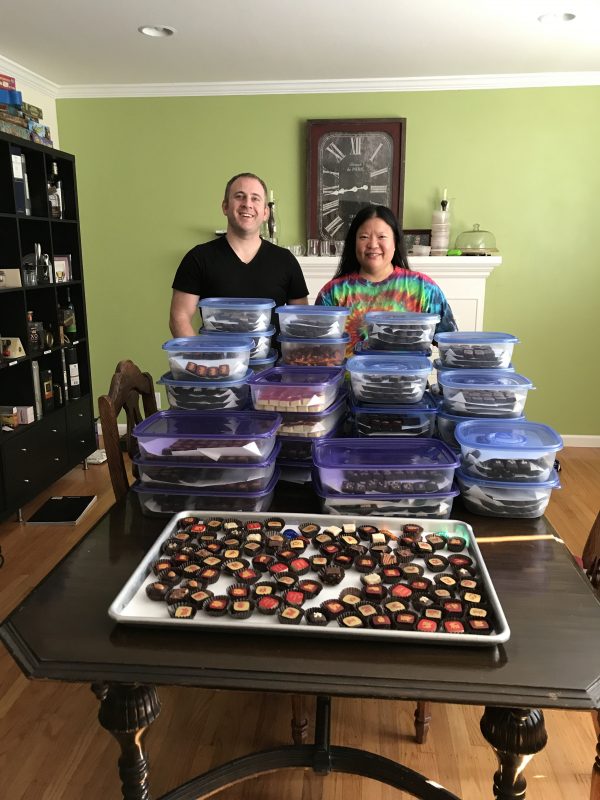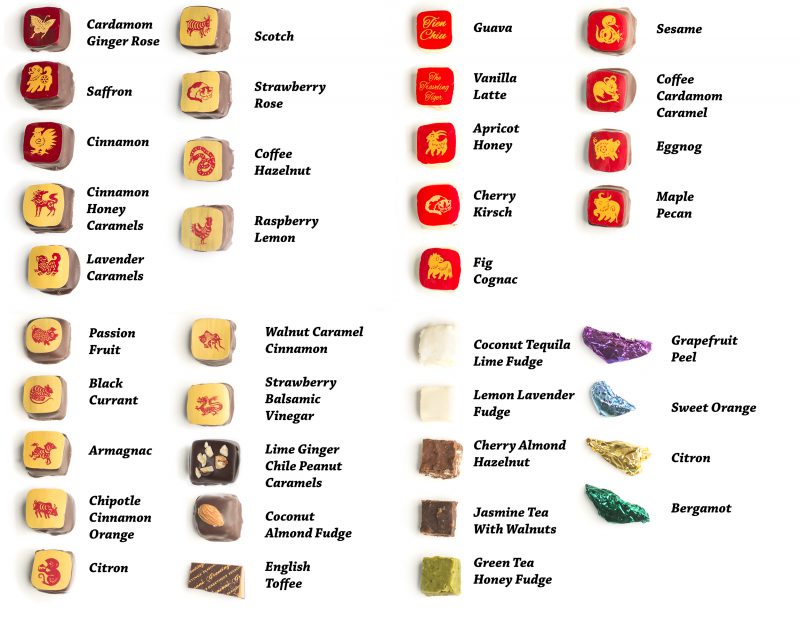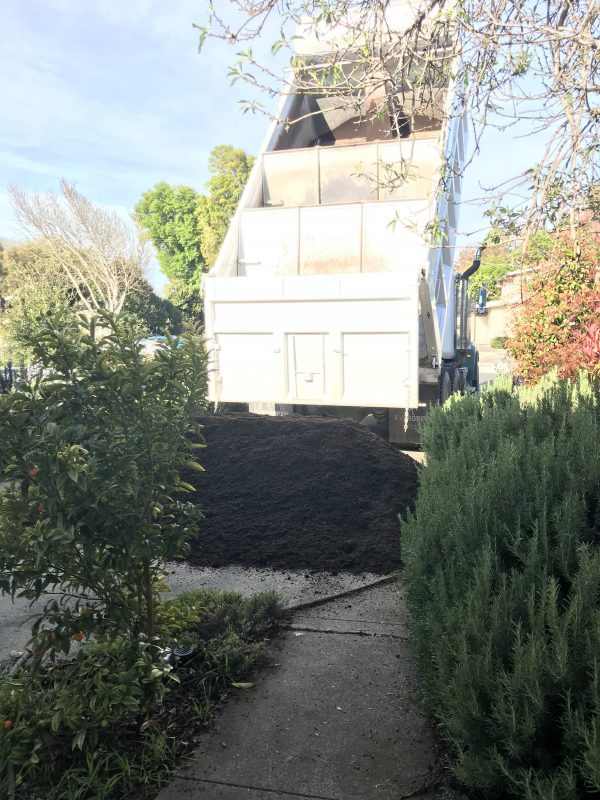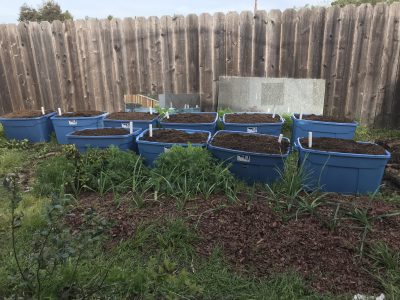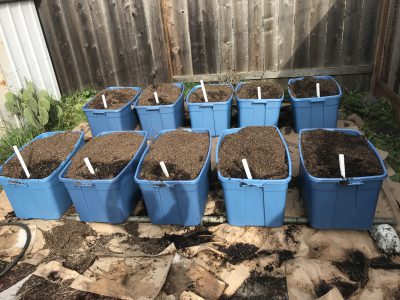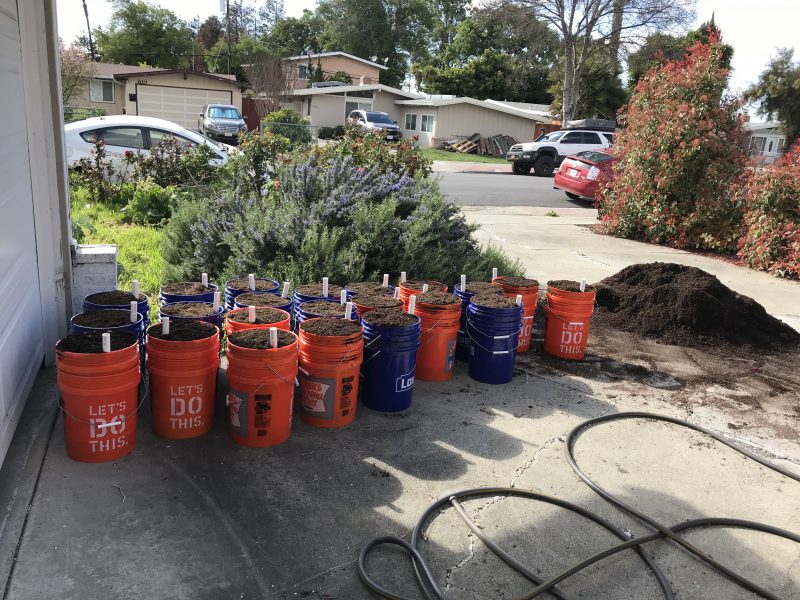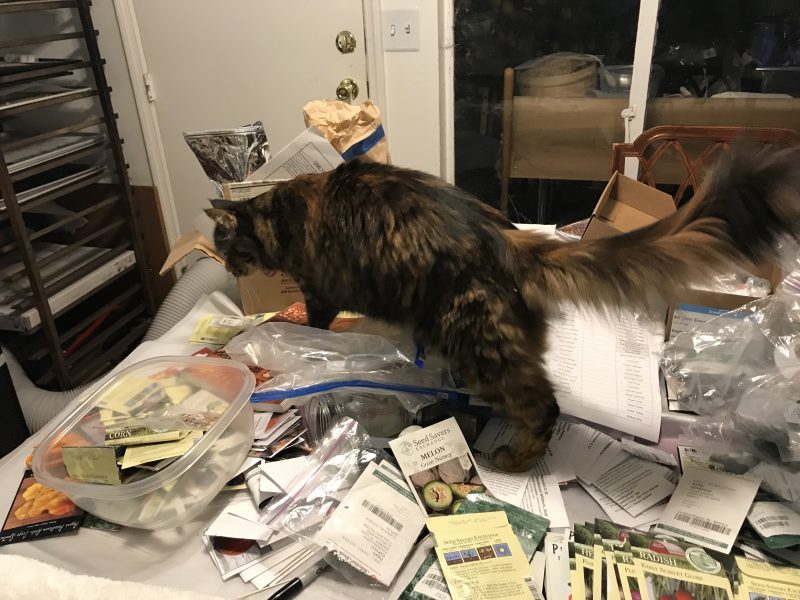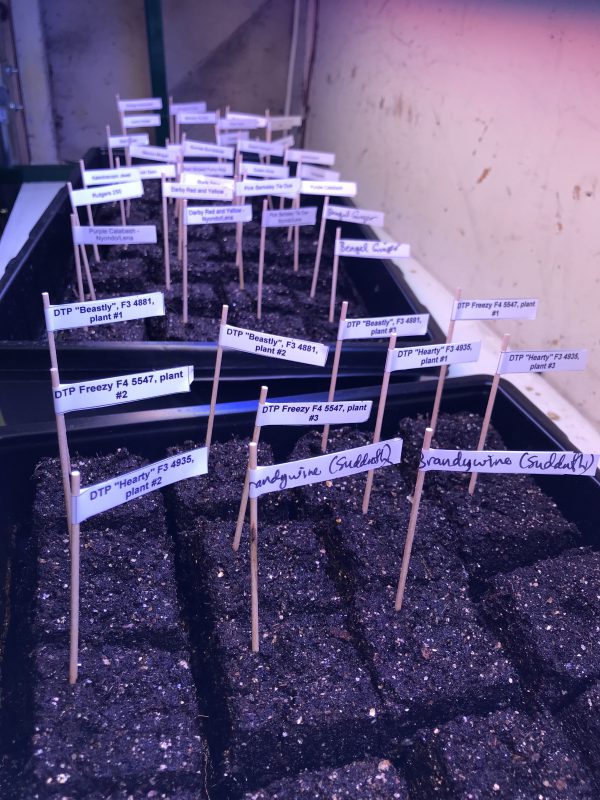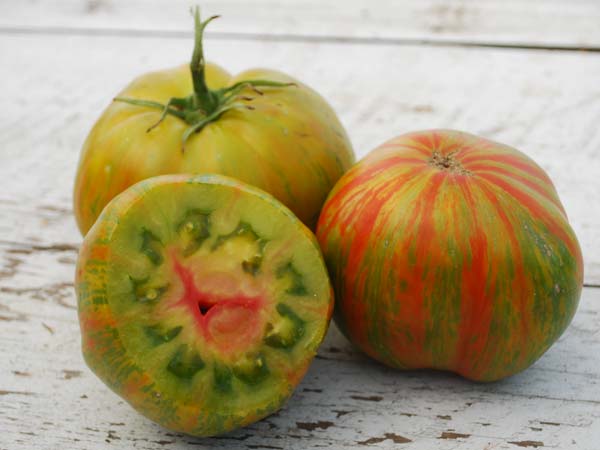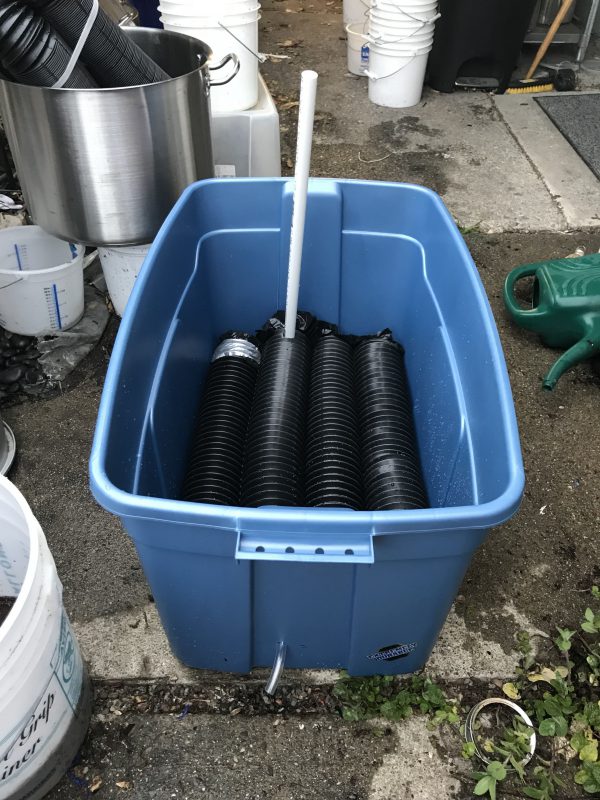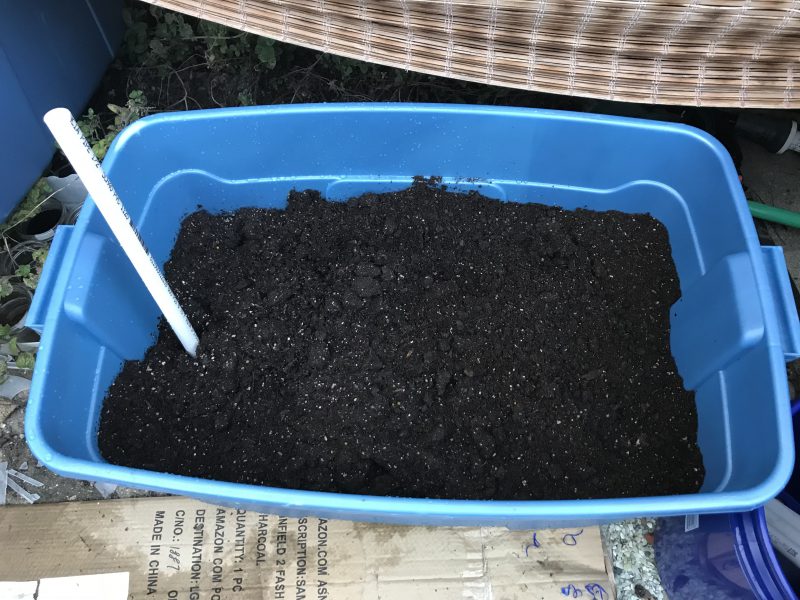
Alas, this is the last collection….the Chocolate Couture House of Tien has now officially closed. My friend Chris Cianci has inherited my equipment, however, and is gleefully planning to continue the tradition. In fact, he did much of the prep work this year, and since I threw out my lower back on the second day of Chocopalooza this year, he and the rest of my intrepid team of volunteers wound up doing most of the work, period. I cooked most of the centers (the flavor-critical parts); they did all the cutting and dipping. And they did a splendid job of it. I can retire from chocolatiering with a clear conscience, knowing the tradition is in good hands.
Here’s the Chocopalooza closing photo with me and Chris. I presented him with a heat-sensitive Star Wars mug when we were done, and poured a liberal dose of hot chocolate into it to make the light sabers come alive.
Use the Force well, young Jedi.
